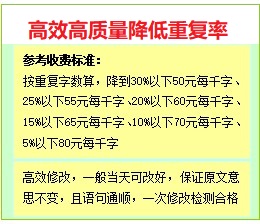全面剖析非言语交流(二)
也许非语言交流最出色的类型,至少在外行人看来是肢体语言。
Body language is also known as kinesics. A pioneer in the field, Ray Birdwhistell (Ray L. Birdwhistell, Kinesics and Context. Philadelphia: University of Pennsylvania Press, 1970, p. 80.), writes, "The isolation of gestures and the attempt to understand them led to the most important findings of kinesic research. This original study of gestures gave the first indication that kinesic structure is parallel to language structure. By the study of gestures in context, it became clear that the kinesic system has forms which are astonishingly like words in language."
肢体语言也被认为是手势语,在这一领域中最卓越的是伯德惠斯戴尔,费城的宾夕法尼亚大学出版社,1970年,第80页写道,“手势的隔离试图理解他们以致发现了重要的手势研究,最初的手势语研究最先标明手势的构造同语言的构造是相类似的。从手势语的语境看越来越清析的觉得手势语的系统方式同文字语言是如此惊人的相似。
Researchers have observed people involved in the communication process. They have studied body language and other nonverbal behaviour, and they have then related or identified these actions with actual content of the message being transmitted. The result is a dictionary of body language meanings.
研究人员观察到人们专注于交流过程。他们会学习肢体语言和其他非言语行为。他们会证明和确认相关动作和实际信息内容之间的传递。这就是词典对肢体语言的阐释。
Both encoder and decoder send nonverbal messages as part of the total communication process.
编码和破译发送非言语信息作为交流渠道的一部分
The nonverbal messages of the encoder tend to reveal the degree of presence or absence of sincerity, honesty, conviction, ability, and qualifications; body language reveals a lot about the encoder and this person's attitude and feelings about the message being transmitted.
编码发送的非言语信息往往揭示缺少存在程度或诚意的,诚实,信念,能力同素质。肢体语言揭示了许多有关编码同这个人的情况和感觉信息的传递。
body language of the decoders also reveals a lot about them and their feelings; but most important, it frequently tells the encoder the extent to which the decoders are accepting or not accepting the message.
肢体语言的破译也揭示了许多关于他们的感情;但最重要的是,它频繁告诉编码在何种程度上的破译是接受或不接受信息。
In other words, body language provides instant feedback to the encoder and answers the question, "How am I doing?" It is this instant feedback which makes face-to-face communication such an effective form of communication.
换句话说,肢体语言提供即时的反馈给编码和解决问题,“我该怎么做?”正是这种即时的反馈让面对面交流成为交流的一种有效形式。
Whether we are aware of it or not, each of us spends a lot of time decoding body language. We observe a wrinkled forehead, a raised eyebrow, a tug on the ear, fingers tapping on the table top, legs crossed and uncrossed, arms crossed over the chest. These movements should be considered in relation to the message itself; however, many times the nonverbal communications come through louder than the words that are actually being spoken.
Have you ever found yourself in a difficult situation and realized that you were shifting your weight in the chair? Or running a finger around the inside of your collar? Or clearing your throat nervously? Nonverbal communication frequently reveals the emotional side of our communications.
我们是否有发觉,我们每个人都花费大量时间了解肢体语言。我们观察我们的前额,微微上翘的眉毛,像船一样的耳朵,手指在桌面上轻敲,双腿时而交叉时而分开。双臂交叉在胸前。这些动作都表示了一些自身信息。然而,非言语交流大多数时候比语言交流更好。你是否发现你在不舒服的情况下会在椅子上动一动?或是用手整理里面的衣领?或是清清嗓子?非言语交流经常展现了我们交流中的情感。
A favourite sport of many is "people watching." While waiting in an airport terminal, have you ever observed the crowd and tried to imagine the occupation, the problems, and the thoughts of various people? Have you observed an individual's dress and tried to conclude something about the person? Have you observed gestures, facial expressions, and manner of walk and tried to guess the nature of the topic under discussion?
最喜欢的事情是“看人”当你在机场大厅等待,你有没有会观察周围人群并试图想象他们的职业,各种问题,不同人的想法?你有没有观察个人的演讲,并试图推测有关他的一些事情?你有没有观察手势,面部表情,以及走路的方式并试图猜测所讨论专题的性质?
To be a good reader of body language requires that you sharpen your powers of observation and perception.
想要更好解读肢体语言你必须提升你的观察力和洞察力。
Observation is a form of decoding, and your ability in this area can be increased by three factors: education, awareness, and need.
观察力是破译的一种形式,你可以从三个方面提升你的能力:教育,提高认识和需求。
Education and awareness are interrelated. Through education, a person becomes aware of more things. in other words, a person knows what to look for; therefore, a person is more likely to observe it, to decode it. Likewise, realizing a need for something makes a person ready and eager to acquire it. If you have ever tried to find a certain house number in a strange neighbourhood, you know that you were probably more alert and aware than usual; you saw things you had not seen before because you had a need to observe and to find the house number.
教育和提高认识是相互关联的。通过教育,可以让一个人认识更多的事情。换句话说,一个人知道要寻找什么;那么他会更多地观察这方面的情况,去破译。同样,认识到自己的需求你就会渴望拥有它。如果你曾经试图在一个陌生街区寻找固定门牌号码,你就会比平常更加警惕和认真;你会看到你以前没有看过的东西因为你需要观察和寻找门牌号码。
Perception has to do with your ability to observe, to remain alert, and to extract from a given communication incident the 'realities' of the situation (recognizing, of course, that reality is different for each of us). You must try to take from the communication verbal and nonverbal messages which are similar for both encoder and decoder. While encoding your message, you must be decoding the body language of the decoder. (Communication is indeed a continuous processl)
用你的感知能力观察,并保持警觉,从一个给定的交流事件提取'客观的真实性'的情况(认识,当然,现实是我们每个人都不同)。你应该认为语言和非语言的交流同编码和破译相类似。你的信息在编码时,您必须破译的肢体语言。 (通讯的确是一个连续的过程)
Whilst mastery of communication techniques is important, it is essential that the encoder be sensitive to the human relations aspects in the communication process, and these human elements are often revealed vividly in body language and other nonverbal communication.
而精确的交流技术很重要,但在通信过程中至关重要的是编码在人与人之间的关系方面要敏感,这些人性的元素往往在肢体语言和其他非语言交流表现的淋漓尽致。
The sooner you, as encoder, receive feedback in the form of a body language message, the sooner you can switch to a more effective encoding technique if necessary.
如果必要的话作为编码越早接收到一个肢体语言的反馈信息,就能越早切换到一个更有效的编码技术。
Eyes 目光
Probably everyone has had some experience with eyes as nonverbal communicators. Most of us have been stared at and have wondered why. Was it curiosity or ill manners? Or perhaps the starer had poor vision and was merely trying to get us in focus. But then there is the possibility the observer found us attractive and interesting and was issuing an invitation to get better acquainted. Most of us have decoded "eye language" even if we did not know about body language or nonverbal communication.
也许每个人都曾用目光进行非语言交流的经验。我们中的大多数都曾被注视着,我们想要知道为什么。是出于好奇心还是不礼貌?或者是他视力不佳只是试图把我们看的更清楚。而此这的观察有可能发现我们是有吸引力和趣味性的便会发出邀请对我们作进一步了解。我们中的大多数已经破译“目光语言”即使我们根本不了解肢体语言和非言语交流.
There are numerous messages that can be sent with the eyes, but the stare is the most important technique a person has. In our culture one does not stare at another person—one stares at things. Therefore, a stare can have a devastating effect because it reduces a person to nonhuman status.
有许多信息是能用目光传递的,但注视是人们拥有最重要的技巧.在我们的文化中你不注视着一个人而是只注视着一件物体, 这种注视会让人很伤心因为降低了他对自己的自信心。
There is an endless number of messages which can be sent when one thinks of eyes combined with different positions and movements of the eyelids and eyebrows. As with all forms of nonverbal communication, messages sent by the eyes should be decoded in terms of the words accompanying them.
有无数的信息是通过目光和不同的姿态与眼皮和眉毛的活动形成的.所有这些都是非言语交流.信息可以通过目光和语言共同来传递。
Hands, arms and legs 手,手臂和腿
How can anyone hope to communicate without using hands and arms? And even legs are for something besides walking.
任何人如何希望不使用手和手臂来进行交流?甚至腿除了步行还可以做一些其他事。
No doubt each of us knows someone who "talks with his or her hands. Some people punctuate communications with such extravagant gestures that it is extremely dangerous to get too close to their nonverbal exclamations. Do you know people who during a conversation or a card game drum or tap incessantly with their finger tips? Are there people you know who constantly click the on-off switch of their ballpoint pens? Do you know people who frequently "pop" their knuckles? Do you notice individuals who tap their feet, who cross and uncross their legs, or who cross their legs and then swing their crossed legs back and forth?
毫无疑问我们每个人都知道“和他或她交谈需要用手”.有些人会使用过分夸大的姿势加强交流以达到非言语感叹.你知道人们在交谈或玩纸牌游戏时最需要用他们的指尖吗? 你知道有人不断按他们的圆珠笔开关吗?你知道有些人经常活动他们的关节吗?你有没有注意一些独特的人经常“轻敲“他们的脚.他们的双腿时而交叉时而分开.时而摆动双腿来回交叉。
What do these nonverbal messages tell you? Is the person nervous? Insecure? Bored? Thinking? Happy? Craving attention? A nuisance? Perhaps the messages mean nothing. On the other hand, if nonverbal signs reveal the emotional side of a communication, it is often important for you to try to determine what message is being transmitted along with the verbal one. Sometimes they are the same; other times they are drastically different.
Many people are devoting their entire life to the study of body language. Body language is an interesting, fascinating area of nonverbal communication; much remains to be learned about it. By becoming a better observer, by sharpening your powers of perception, and by knowing as much as possible about your audience (decoders), you should be able to translate more accurately nonverbal and verbal messages.
这些非言语信息告诉你什么呢?是人们感到紧张吗?不安吗?无聊吗?思考吗?高兴吗?渴望关注吗?讨厌的东西吗?或许这些信息什么都没表示.从另一方面理解,如果非言语符号展现交谈的一种情感.这是非常重要的你可以尝试确定哪些信息是被口头传递.有时他们的意思是一样的;有时它们的意思又截然不同.许多人都用他们毕生的时间研究肢体语言。肢体语言是一种非常有趣的,迷人的非言语交流;我们坚持不懈地去学习。通过提高你的感知能力,加强你的洞察力,尽可能多地了解你的观众(破译),你就能更准确地破译更多非言语信息和语言信息。
全面剖析非言语交流(二)由毕业论文网(www.huoyuandh.com)会员上传。


